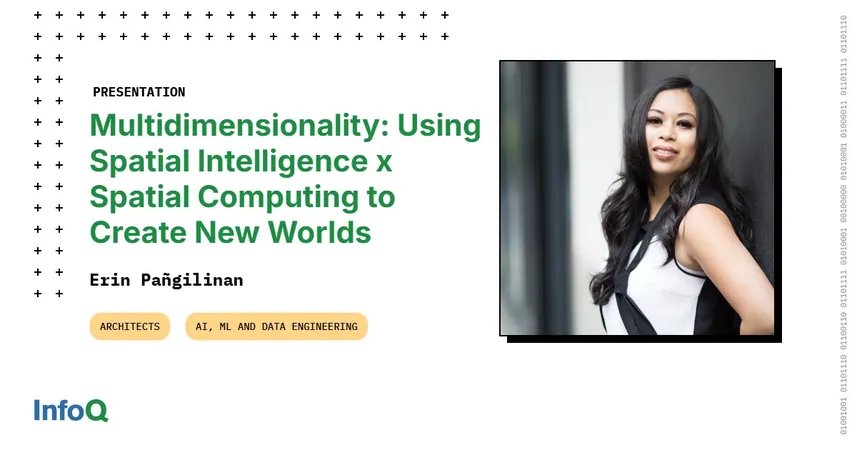
Unlocking New Realms: The Fusion of Spatial Intelligence and XR
2025-09-04
Author: Li
Creating New Worlds with Spatial Intelligence and XR
In the journey of integrating Augmented Reality (AR) and Virtual Reality (VR) with Artificial Intelligence (AI), Erin Pangilinan highlights how these technologies converge to shape our digital landscapes.
A Journey Through Time: Evolution of XR and AI
Starting from 2016, Pangilinan reflects on the growth of AR and VR technologies. One memorable experience was a data visualization in Microsoft HoloLens, showcasing how interaction has evolved. Fast forward to 2024, devices like the Apple Vision Pro enable developers to interact with expansive coding environments, blending AR capabilities with user-friendly interfaces.
The Visionaries Behind Change
Dr. Fei-Fei Li, renowned for her work in AI, co-founded a startup called World Labs, focusing on spatial intelligence—a revolutionary approach to understanding our environment more intuitively. This reflects a shift towards a future where AI and XR technology work hand-in-hand.
AI Meets XR: A New Frontier in Design and Interaction
As everyday objects become interactive, users with ALS can manipulate virtual items using brainwaves. With the rise of generative AI, collaboration, creation, and automation pave new pathways for innovative app development, underscoring that AI is not just a tool but an enhancement of human capabilities.
Key Terminologies in the XR Spectrum
Pangilinan explains the variety of terms—XR, AR, MR, and spatial computing—that represent the same expansive field. Each term signifies a layer within this multifaceted technological landscape, illustrating how they intertwine to create rich experiences.
Revolutionizing Development with AI Tools
The development stack for XR has morphed dramatically over the years. What once required mastery of complex programming languages can now utilize AI tools for efficiency and creativity. The evolution to low-code platforms allows even novices to construct immersive interactions in virtual environments.
Looking Ahead: The Marriage of AI and XR in Automation
As we embrace automated tools powered by AI, future potential expands dramatically. AI can streamline repetitive tasks, while creating avenues for human creativity. With motion capture and data generation, developers can create rich, engaging virtual experiences rapidly.
Navigating Challenges: Privacy and Ethical Considerations
As advancements unfold, the need for ethical considerations grows. Privacy remains a central concern, particularly as users surrender their biometric data to applications. Pangilinan emphasizes the importance of incorporating ethical design from the onset of development.
Empowering Developers: The Call for Accessibility
Pangilinan urges developers to embrace a diverse toolkit for creating XR applications. By prioritizing inclusivity and human-centered design, the industry can pave the way for a richer and more varied landscape in XR experiences.
Conclusion: The Future is Multidimensional
As dimensions of technology intertwine, building new realities becomes a shared responsibility. With ongoing advancements in AI and XR, the potential for creativity and genuine human connection in the digital realm is limitless.



 Brasil (PT)
Brasil (PT)
 Canada (EN)
Canada (EN)
 Chile (ES)
Chile (ES)
 Česko (CS)
Česko (CS)
 대한민국 (KO)
대한민국 (KO)
 España (ES)
España (ES)
 France (FR)
France (FR)
 Hong Kong (EN)
Hong Kong (EN)
 Italia (IT)
Italia (IT)
 日本 (JA)
日本 (JA)
 Magyarország (HU)
Magyarország (HU)
 Norge (NO)
Norge (NO)
 Polska (PL)
Polska (PL)
 Schweiz (DE)
Schweiz (DE)
 Singapore (EN)
Singapore (EN)
 Sverige (SV)
Sverige (SV)
 Suomi (FI)
Suomi (FI)
 Türkiye (TR)
Türkiye (TR)
 الإمارات العربية المتحدة (AR)
الإمارات العربية المتحدة (AR)